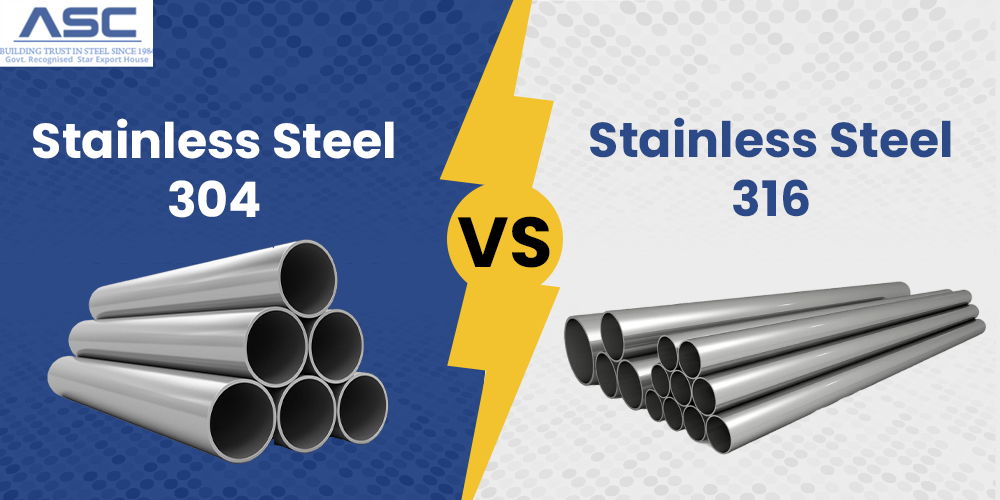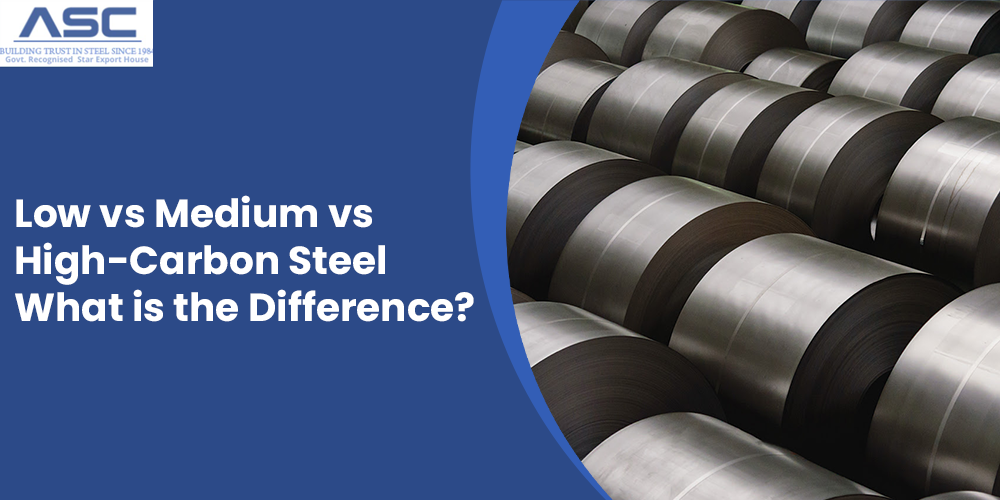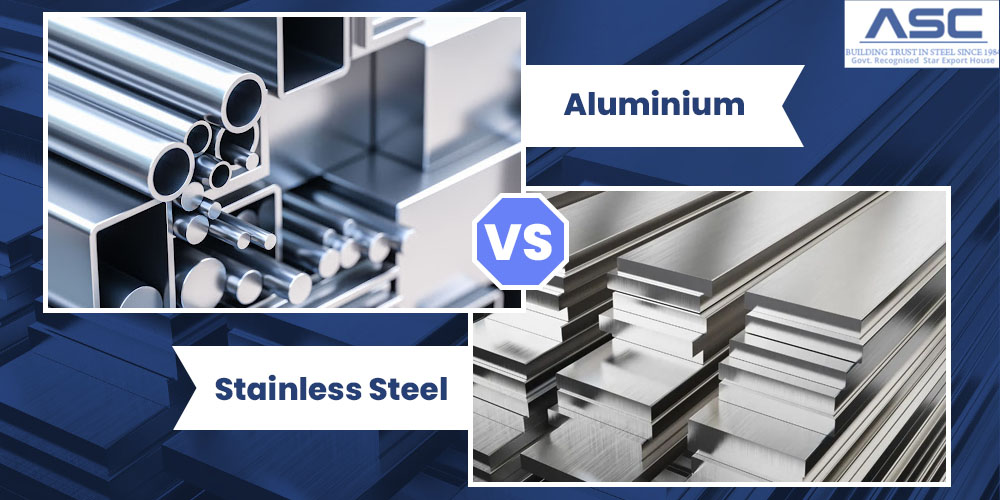Difference Between 304 and 316 Stainless Steel
by AMC
Posted on May 28, 2024 at 12:00 PM

Stainless steel comes in many types, but two common ones are 304 and 316. These are often used in medical settings because they resist rusting and are easy to shape.The key difference between 304 and 316 stainless steel is the addition of molybdenum in 316 steel, which makes it even better at fighting corrosion, especially in salty or chlorine-filled places.
Both 304 and 316 steel are good for welding and shaping, making them handy in lots of industries. They can't get stronger with heat, but they can if you work them cold.
In this article we explore the difference between 304 and 316 stainless steel compositions, properties, price, corrosion resistance, hardness & durability & applications.
304 Stainless vs 316 Stainless Steel
Stainless Steel 304 vs 316 Price
When comparing 304 stainless steel to 316 stainless steel, one important aspect to consider is the price. The price of stainless steel depends on the elements mixed into it. Both types of stainless steel must have at least 10.5% chromium and contain iron as a major component. However, the additional elements in their composition affect their properties and, consequently, their cost.
316 stainless steel includes a minimum of 2.0% molybdenum, which enhances its corrosion resistance compared to 304. Because molybdenum is a pricier element, this makes 316 stainless steel generally more expensive than 304 stainless steel.
Magnetic Properties of 304 & 316 Stainless Steel
Both 304 stainless steel and 316 stainless steel are classified as austenitic, which means they are non-magnetic.
However, cold working processes can slightly alter this characteristic. When these stainless steels are formed or cut, there might be a minor increase in their magnetic properties. Overall, though, their magnetism remains minimal.
304 vs 316 Stainless Steel Chemical Composition
| Grade | C | Si | Mn | P | S | N | Cr | Ni | Mo |
|---|---|---|---|---|---|---|---|---|---|
| 304 | 0.07 | 1.00 | 2.00 | 0.045 | 0.015 | 0.10 | 17.5 - 19.5 | 8.0 - 10.5 | - |
| 316 | 0.07 | 1.00 | 2.00 | 0.045 | 0.015 | 0.10 | 16.5 - 18.5 | 10.0 - 13.0 | 2.0 - 2.5 |
316 vs 304 Stainless Steel Physical Properties
Physical Properties of 304 Stainless Steel
| Physical Property | Value |
|---|---|
| Melting Point | 1450℃ |
| Density | 8.00 g/cm^3 |
| Thermal Expansion | 17.2 x10^-6/K |
| Modulus of Elasticity | 193 GPa |
| Thermal Conductivity | 16.2 W/m.K |
316 Stainless Steel Physical Properties
| Melting point | 1400℃ |
|---|---|
| Density | 8.00 g/cm^3 |
| Modulus of Elasticity | 193 GPa |
| Thermal Expansion | 15.9 x 10^-6 |
| Thermal Conductivity | 16.3 W/m.K |
316 vs 304 Stainless Steel Mechanical Properties
304 Stainless Steel Mechanical Properties
| Tensile Strength | 500-700 Mpa |
|---|---|
| Elongation A50 mm | 45 Min % |
| Hardness (Brinell) | 215 Max HB |
316 Stainless Steel Mechanical Properties
| Tensile Strength | 400-620 Mpa |
|---|---|
| Elongation A50 mm | 45% min |
| Hardness (Brinell) | 149 max HB |
304 vs 316 Stainless Steel Corrosion Resistance
Grade 304 stainless steel is the most commonly ordered type globally.
It provides the typical corrosion resistance, formability, strength, and easy maintenance that stainless steel is renowned for.
On the other hand, Grade 316 stainless steel, although less commonly ordered, boasts significantly superior corrosion resistance, especially against chlorides and acids. This makes it a preferred choice in environments where exposure to harsh chemicals or saltwater is a concern.
304 vs 316 Stainless Steel Heat Resistance
When comparing 304 stainless steel to 316 stainless steel in terms of heat resistance, it's important to note that both grades exhibit good resistance to oxidation under certain temperature conditions.
- 304 Stainless Steel: Handles high heat well, but continuous use at temperatures between 425-860 °C (797-1580 °F) may lead to corrosion.
- 316 Stainless Steel: Performs best in temperatures above 843 ℃ (1550 ℉) and below 454 ℃ (850°F). It offers superior resistance to corrosion in high-temperature environments compared to 304 stainless steel.
Stainless Steel 304 vs 316 Strength
Stainless steel 304 and 316 are both exceptionally strong and durable materials. In terms of tensile strength, they are nearly identical. While 316 stainless steel has a slightly higher yield strength, the difference is minimal. Through cold working processes that harden the metal, both 304 and 316 stainless steel can achieve significantly higher hardness and strength ratings.
316 vs 304 Stainless Steel Applications
304n Stainless Steel Applicatios
304 stainless steel finds extensive use in various industries due to its durability and resistance to corrosion. Here are some common applications:
- Food Preparation: Used in fryers, food preparation tables, and other equipment due to its ability to withstand powerful cleaning chemicals and compliance with FDA regulations for food safety.
- Kitchen Equipment: Widely used in cookware, silverware, and kitchen appliances for its durability and resistance to corrosion.
- Architectural: Utilized in architectural applications such as siding, elevators, and bathroom stalls due to its aesthetic appeal, durability, and resistance to environmental elements.
- Medical: In the medical industry, 304 stainless steel is used for trays, surgical tools, and equipment requiring high cleanliness standards and resistance to corrosion.
316 Stainless Steel Applications
316 stainless steel stands out for its enhanced corrosion resistance, thanks to the addition of Molybdenum. This feature makes it a preferred choice for demanding environments like marine settings and hospitals where cleanliness and durability are crucial.
Common Applications of 316 Stainless Steel:
- Water Handling: Used in boilers, water heaters, and other water-handling equipment due to its corrosion resistance and durability.
- Marine Parts: Essential for boat rails, wire ropes, boat ladders, and other marine components due to its exceptional resistance to corrosion in saltwater environments.
- Medical Equipment: Utilized in hospitals and medical facilities for equipment requiring cleanliness, durability, and corrosion resistance.
- Chemical Processing: In chemical processing industries, 316 stainless steel is favored for its resistance to corrosive chemicals, making it suitable for equipment used in such environments.
316 vs 304 Stainless Steel: Which is Better?
Looking for the perfect stainless steel tubing for your project? Amardeep Steel is your trusted tubing supplier, offering expertise and quality to enhance the value, reliability, and performance of your designs. Our high-quality tubing is tailored to fit your product precisely, ensuring longevity and meeting customer expectations for dependability and functionality.
Why Choose Amardeep Steel?
- Knowledge and Experience: With years of experience, we understand the intricacies of stainless steel tubing and can guide you to the best choice for your needs.
- Customized Solutions: We provide tailored tubing solutions that fit your product specifications perfectly, ensuring optimal performance and longevity.
- Dependability: Our stainless steel tubing is designed to last for the life of your product, giving you and your customers peace of mind.
- Quality Assurance: We maintain strict quality standards to deliver tubing that meets industry requirements and exceeds expectations.
Contact Amardeep Steel today for all your tubing needs. Let us help you navigate the differences between 304 and 316 stainless steel and choose the right tubing for your application!
.jpg)
Alloy Steel vs. Stainless Steel
Alloy steel is a type of steel that is made by combining two or more different metals or elements to improve its properties. The specific combination of metals and their ratio can vary depending on the intended application and desired properties of the steel.

Low, Medium, and High-Carbon Steel: Everything You Need to Know
Low-carbon steel, often referred to as mild steel, has a relatively low proportion of carbon compared to other steel varieties. Typically, its carbon content ranges between 0.05% and 0.32% by weight.

Aluminium Vs. Stainless Steel: Which is Better for Your Project?
Stainless steel is inherently stronger than aluminum when comparing similar shapes, thicknesses, or designs. To assess their relative strength, one effective approach is to examine their tensile strength. Tensile strength measures a material's.